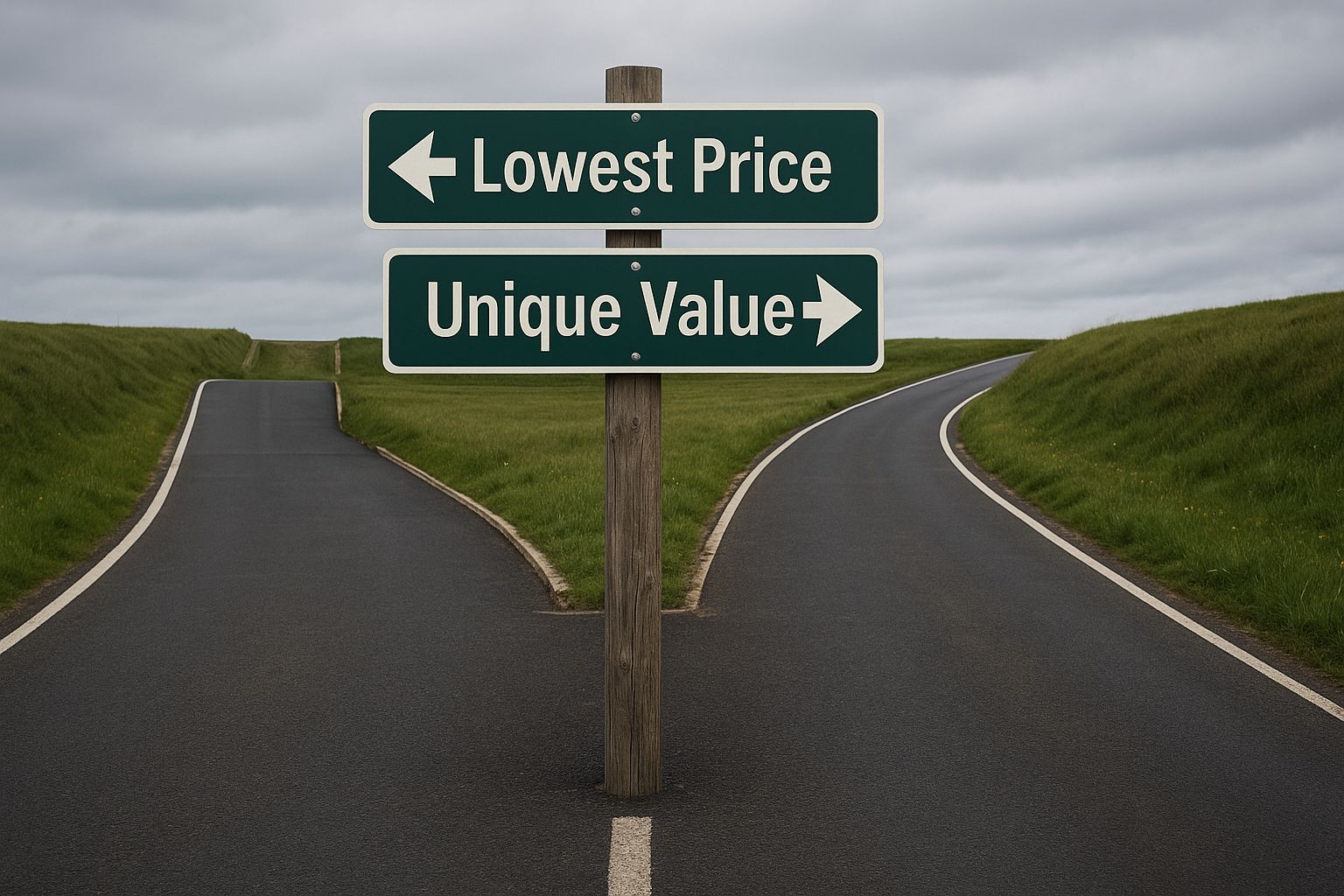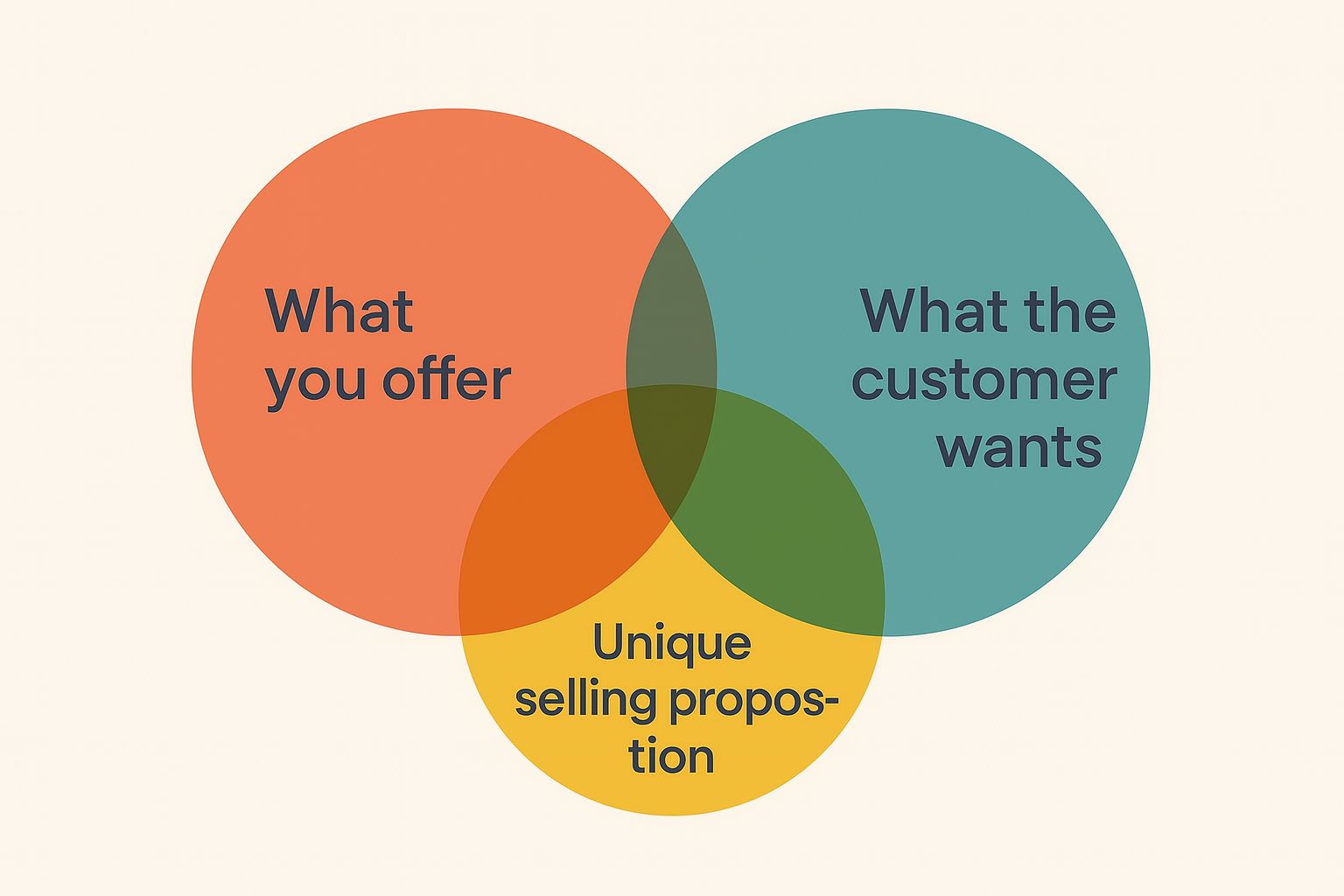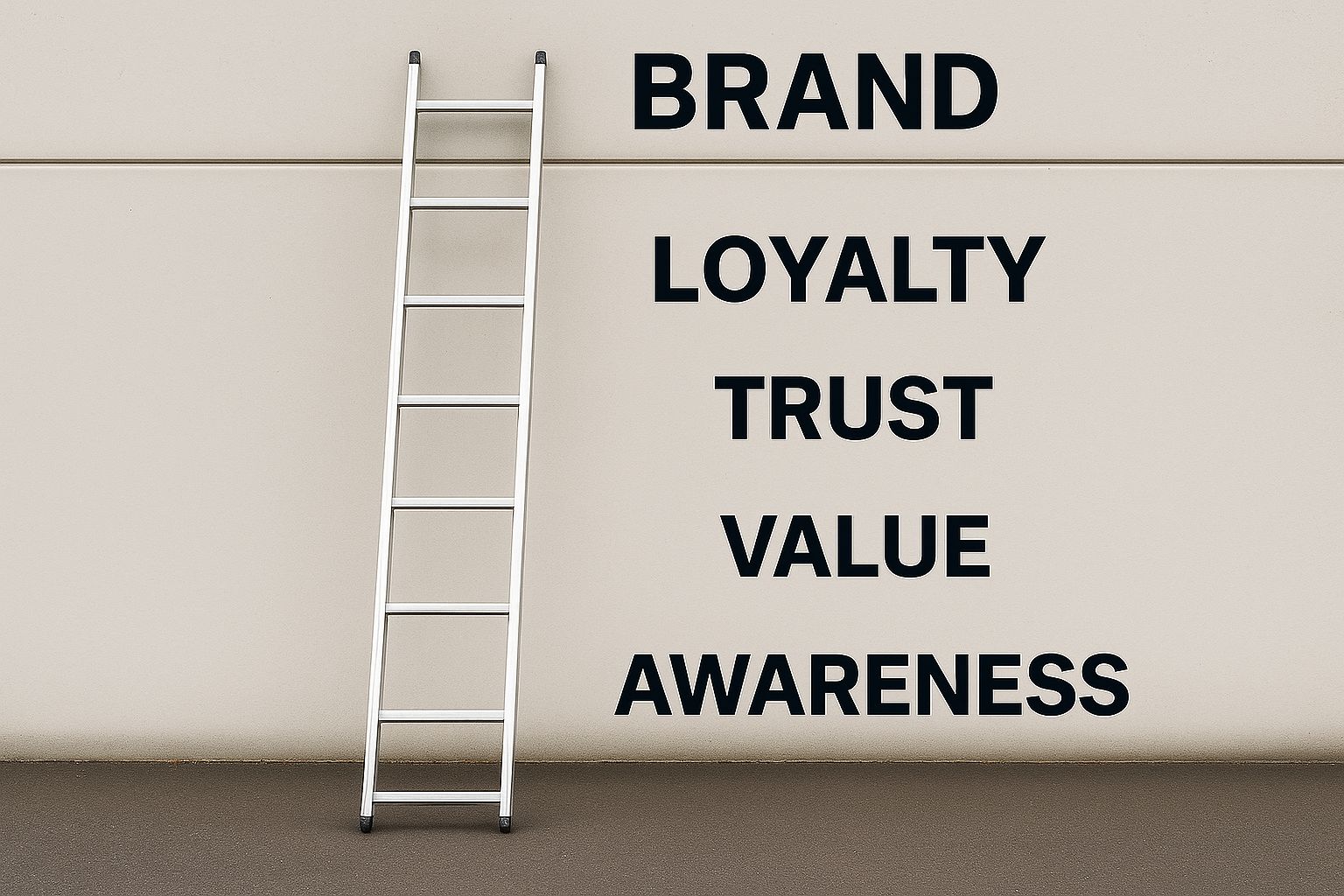
Slashing prices might sound like an easy way to win customers, but it’s a short-term tactic with long-term consequences. When your product’s only advantage is a lower price, you’re inviting a dangerous race to the bottom.
That path leads to one outcome: commoditization. Customers begin to view your product as interchangeable with those of others. If someone else can offer it for less, they will, and you’ll be stuck either lowering your price again or losing the sale.
The damage doesn’t stop there. Competing solely on price eats away at your margins, strips value from your brand, and makes it difficult to reinvest in growth, innovation, or customer experience. Over time, your business becomes unsustainable, even if sales remain steady.
Take a look at any crowded marketplace, from online apparel to phone accessories. Dozens of sellers are offering nearly identical items, undercutting each other by pennies. Very few of those businesses survive in the long term, and even fewer establish recognizable brands.
Differentiation doesn’t mean you need to be better than the competition in every way. It means being different in a way that actually matters to your customer.
When you focus on strategic product differentiation, you're no longer fighting over pennies. Instead, you’re communicating why your product solves a specific problem, meets a particular need, or delivers a unique benefit your audience truly cares about.
Effective ways to differentiate include:
- Using premium or eco-conscious materials
- Offering a standout customer experience
- Telling a powerful brand story
- Creating unique packaging or design
- Solving a problem in a way others don’t
The key is to align your differentiation with what your target audience values, not just what you think is special.

Your Unique Selling Proposition (USP) is the foundation of how you position your product in the market. It should answer the question, “Why should someone choose you instead of someone else?”
If you can’t answer that clearly, chances are your customers can’t either.
A strong USP is not just a tagline. It shows up in everything from your product descriptions and sales pitches to your branding and customer service. It guides what you say, how you say it, and where you say it.
To uncover your USP, ask:
- What is the one thing I offer that no one else does in the same way?
- Why do my existing customers choose me?
- What promise can I consistently deliver on?
When you lead with your USP, you give customers a reason to pay attention. More importantly, you give them a reason to pay more because they see the value.
Let’s look at a few companies that have used differentiation to dominate, without relying on low prices:
Apple sells one of the most expensive phones on the market, yet customers line up for it. Their product ecosystem, high-end design, and brand experience drive demand and loyalty. According to one case study, Apple’s seamless integration of hardware, software, and services reinforces brand trust and enables premium pricing without sacrificing sales¹.
RXBAR broke through a saturated health food market by doing something simple but bold: listing its whole ingredients clearly on the front of the package. This transparency, paired with minimalist packaging, resonated with health-conscious buyers. The brand exploded from $2 million in revenue in 2014 to $160 million just three years later² ³.
Warby Parker disrupted a stale eyewear industry not by being cheaper, but by being smarter. They introduced a risk-free home try-on program and paired it with a philanthropic message - for every pair sold, they donated one. Their differentiation focused on convenience and conscience, creating deep customer trust and long-term brand equity⁴ ⁵.

Price will always be part of the buying decision, but it shouldn’t be the reason your business exists. Customers will always pay more for something they believe is worth more. That belief starts with the way you define, deliver, and communicate your value.
The bottom line? If you’re not clearly differentiating, you’re competing on price, whether you meant to or not.
Stop the price war. Start leading with value.
Need help clarifying your USP or repositioning your product? Let’s talk about how to define your value and build a business that doesn’t depend on constant discounts.
For more educational content, explore our blog posts.
¹ Apple Brand Strategy: https://drpress.org/ojs/index.php/HBEM/article/view/17114
² RXBAR Growth Case: https://www.linkedin.com/posts/chirag-puri_branding-businessgrowth-rxbar-activity-7285232201103810561-DOue
³ RXBAR Branding Strategy: https://brandpoets.com/2024/06/05/when-branding-stepped-up-the-rxbar-success-story/
⁴ Warby Parker Differentiation Strategy: https://aokmarketing.com/developing-a-powerful-unique-selling-proposition-usp-a-comprehensive-guide/
⁵ Warby Parker Case Study: https://www.g-co.agency/insights/warby-parker-advertising-and-marketing-strategy-case-study